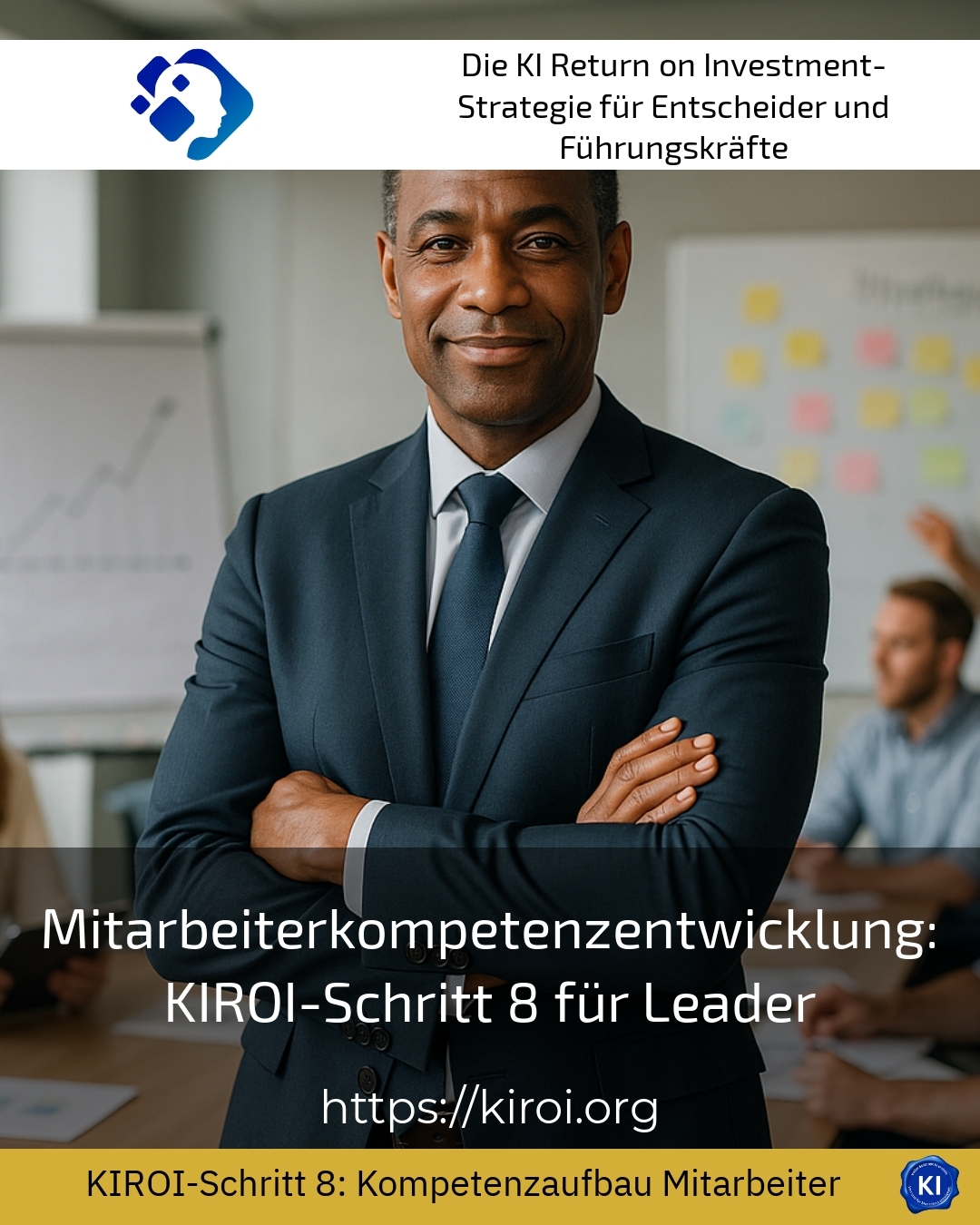Employee competence development is a central building block for the sustainable success of managers. The eighth step of the KIROI model for leaders focuses on the targeted support of development processes. This step supports managers in guiding employees on their individual competence path and thus increasing performance and satisfaction in the team.
Employee skills development: A strategic approach for leaders
Employee skills development requires managers to be able to recognise potential and initiate appropriate development measures. In addition to traditional training, this also includes modern methods such as coaching or project-based learning. In this way, competences can not only be taught theoretically, but above all expanded in a practical way.
For example, companies in the manufacturing industry use job rotation to deploy employees with different backgrounds and build up a wide range of skills. In the IT sector, many companies rely on e-learning combined with practical coding projects to efficiently develop complex skills. In the service sector, regular feedback rounds and coaching sessions enable targeted skills development.
The role of managers in KIROI step 8
In the eighth step, managers act as active facilitators and initiators. Their task is to encourage employees to self-reflect and define individual learning goals together. It is helpful to regularly evaluate development steps and make successes visible. This creates a culture of continuous learning and motivation.
A practical example is provided by a medium-sized metalworking company: the team leader introduced regular one-to-one meetings in which personal strengths and areas for development were identified. This made it possible to initiate targeted training programmes that not only strengthened technical skills, but also social skills.
Another example is a financial services provider that provided its managers with systematic coaching. The leaders were given tools to provide their teams with tailored support and to better recognise development potential. This led to a noticeable improvement in employee satisfaction and team dynamics.
In the manufacturing sector, one company reported how project work was used as part of employee skills development. Employees from different departments took on responsibility for cross-departmental projects and expanded their methodological and social skills.
Methods and tools to support skills development
As part of the eighth KIROI step, the use of different methods is recommended. These include on-the-job training, which enables the transfer of knowledge directly into practice. Equally important are coaching and mentoring, which promote personal development through individual support.
Practical examples from the IT sector illustrate how agile coaching formats contribute to increasing self-organisation and problem-solving skills. In retail, mastermind groups are often used in which employees share their knowledge and motivate each other to develop new skills.
Digital learning platforms also play an important role. A well-known logistics company utilised a combined blended learning strategy that combines classroom seminars with e-learning modules. This enabled both specialised and methodological skills to be developed regardless of time and location.
BEST PRACTICE with one customer (name hidden due to NDA contract)
A specially tailored programme for employee skills development was implemented in an international technology company. Managers were trained to recognise and specifically promote the individual potential of their teams. Regular workshops and feedback sessions accompanied the process. The flexible combination of coaching, project work and digital learning enabled employees to continuously develop their skills and apply them in a practical way.
Practical tips for employee skills development
It makes sense for leaders to create clear structures for employee skills development and to promote regular dialogue. The first step can be to analyse individual needs through discussions or questionnaires. Based on this, measures can be planned to strengthen both technical knowledge and social and methodological skills.
It is important to not only focus on formal training, but to consciously create learning opportunities in everyday working life, such as taking on new responsibilities or exchanging ideas in cross-departmental teams. This makes development processes authentic and practical, which motivates employees more.
It is also worth establishing a feedback culture. Regular, constructive feedback helps to visualise progress and define new areas of learning. In this way, employee skills development is perceived as a continuous process that also allows for changes and adjustments.
My analysis
Employee competence development is a multi-layered process that is effectively supported by the eighth chapter of the KIROI model for leaders. Managers can provide impetus through targeted support and a variety of methods to encourage employees in their individual development. Practical learning formats and an open feedback culture play a decisive role in this.
The combination of formal and informal learning processes contributes to the sustainable and targeted development of competences. This not only strengthens technical skills, but also social and methodological competences that are important for the complex day-to-day work. Overall, employee skills development creates valuable conditions for organising teams in a sustainable and motivated way.
Further links from the text above:
Skills development: definition + successful examples [1]
11 Employee development methods & benefits [2]
What is skills development? - teamazing Lexicon [3]
For more information and if you have any questions, please contact Contact us or read more blog posts on the topic Artificial intelligence here.















